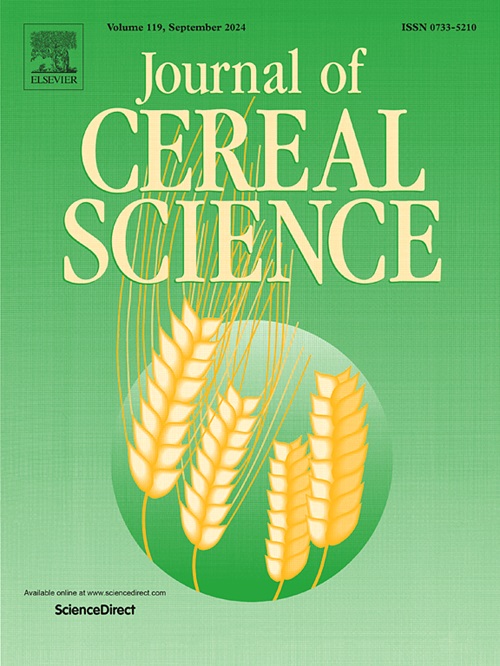Detecting γ-aminobutyric acid and folates in wheat seedlings using hyperspectral imaging
IF 3.9
2区 农林科学
Q2 FOOD SCIENCE & TECHNOLOGY
引用次数: 0
Abstract
This study introduces the application of hyperspectral imaging (HI) technology for the non-destructive detection of γ-aminobutyric acid (GABA) and folates, which are bioactive compounds in wheat seedlings. Analyzing the GABA and folate content in 210 wheat varieties distributed across China provides an ideal dataset for model prediction. By comparing various preprocessing, filtering, and modeling techniques, predictive models with high accuracy were established. The 1st-GA-PLS model effectively predicts GABA content (RMSEC = 27.887, Rc2 = 0.803, RMSEP = 25.640, Rp2 = 0.858, RPD = 2.576), while the S-G-SPA-SVM model achieves very high accuracy in predicting folate content (RMSEC = 9.761, Rc2 = 0.937, RMSEP = 18.742, Rp2 = 0.894, RPD = 3.065). Our research provides meaningful insights for the intelligent cultivation of wheat seedlings, offering a valuable tool for precision farming and production of wheat seedlings as functional food ingredients.

利用高光谱成像技术检测小麦幼苗中的γ-氨基丁酸和叶酸
介绍了高光谱成像(HI)技术在小麦幼苗中γ-氨基丁酸(GABA)和叶酸等生物活性物质无损检测中的应用。分析中国210个小麦品种的GABA和叶酸含量,为模型预测提供了理想的数据集。通过比较各种预处理、滤波和建模技术,建立了精度较高的预测模型。1 - ga - pls模型预测GABA含量的准确度较高(RMSEC = 27.887, Rc2 = 0.803, RMSEP = 25.640, Rp2 = 0.858, RPD = 2.576), S-G-SPA-SVM模型预测叶酸含量的准确度较高(RMSEC = 9.761, Rc2 = 0.937, RMSEP = 18.742, Rp2 = 0.894, RPD = 3.065)。我们的研究为小麦幼苗的智能栽培提供了有意义的见解,为精准农业和生产小麦幼苗作为功能性食品原料提供了有价值的工具。
本文章由计算机程序翻译,如有差异,请以英文原文为准。
求助全文
约1分钟内获得全文
求助全文
来源期刊

Journal of Cereal Science
工程技术-食品科技
CiteScore
7.80
自引率
2.60%
发文量
163
审稿时长
38 days
期刊介绍:
The Journal of Cereal Science was established in 1983 to provide an International forum for the publication of original research papers of high standing covering all aspects of cereal science related to the functional and nutritional quality of cereal grains (true cereals - members of the Poaceae family and starchy pseudocereals - members of the Amaranthaceae, Chenopodiaceae and Polygonaceae families) and their products, in relation to the cereals used. The journal also publishes concise and critical review articles appraising the status and future directions of specific areas of cereal science and short communications that present news of important advances in research. The journal aims at topicality and at providing comprehensive coverage of progress in the field.
 求助内容:
求助内容: 应助结果提醒方式:
应助结果提醒方式:


